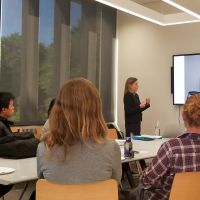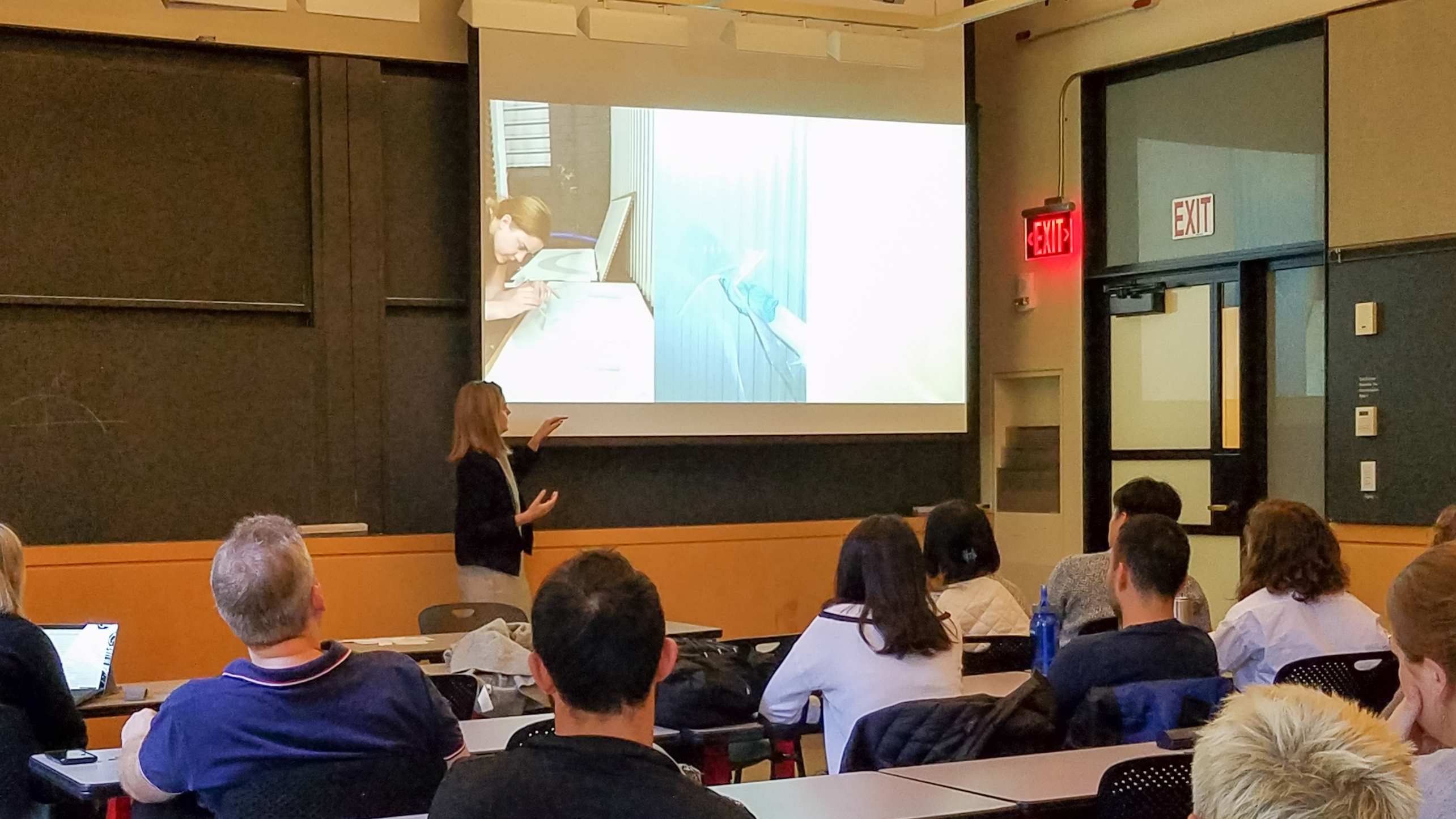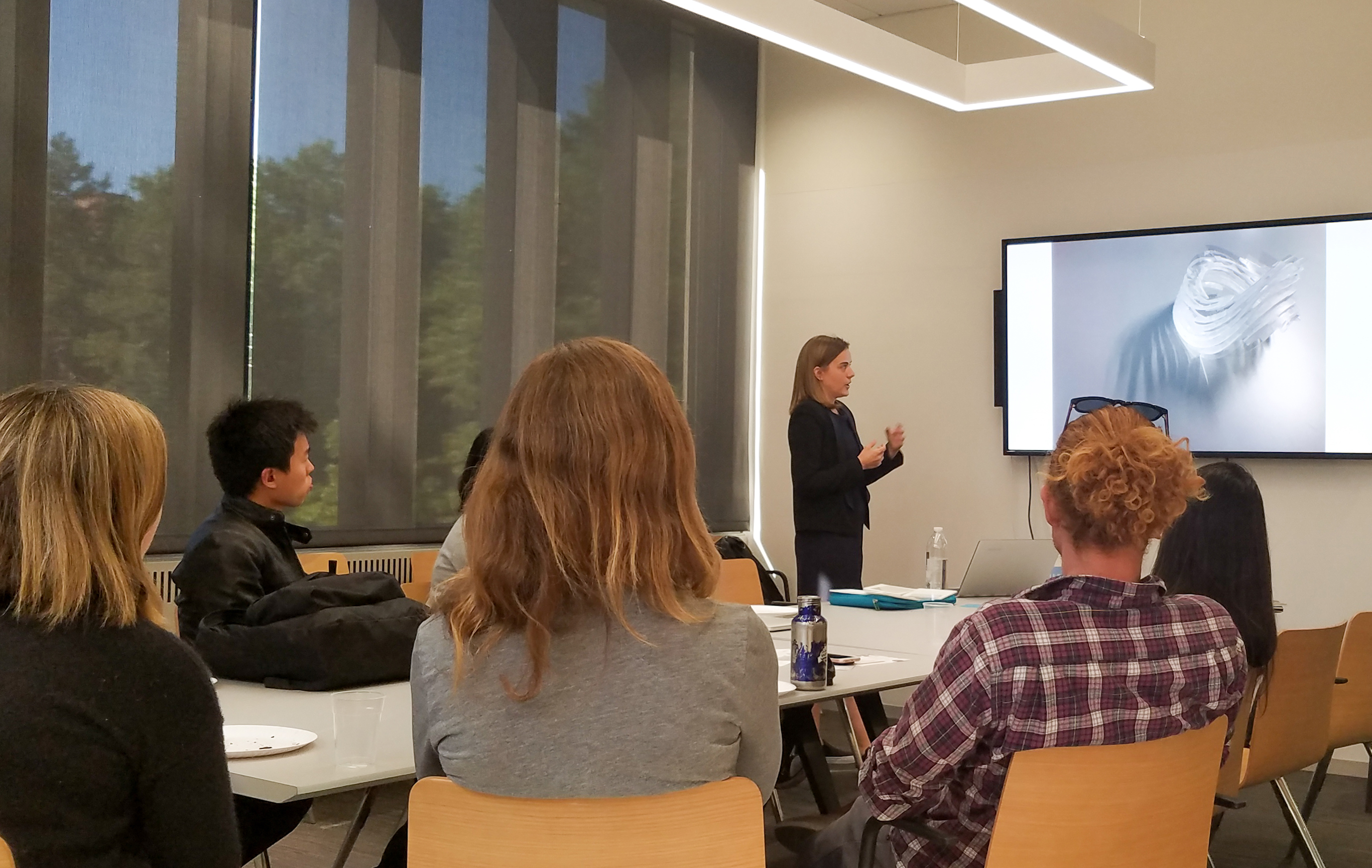Tag: glass
-
 Interdisciplinary Innovation: A Closer Look at Shaping Ultra-Thin Glass with Sophie Pennetier2017-10-04, Authors: Pierre Cuvilliers Demi Fang
Interdisciplinary Innovation: A Closer Look at Shaping Ultra-Thin Glass with Sophie Pennetier2017-10-04, Authors: Pierre Cuvilliers Demi FangStructural engineer Sophie Pennetier has worked on a wide range of specialty structures ranging from the National Museum of African American History and Culture to the Mexico City Airport in firms such as RFR, Guy Nordenson and Associates, SHoP Construction, and Arup. Beyond this accomplished track record in structural engineering, all within ten years of graduating from university, Pennetier has already begun to challenge the boundaries of the role of the engineer.
A recipient of the Jerry Raphael fellowship from the Metropolitan Contemporary Glass Group and Urban Glass Brooklyn in 2016, Pennetier was awarded the opportunity to explore the possibilities in cold bent ultra-thin glass and to apply the knowledge as her own “designer, engineer, and maker” of a small glass sculpture. The process was additionally supported by Corning Inc, Coresix Inc, and Arup. Pennetier stopped by MIT in early October to give us a presentation on “Shaping Ultra-Thin Glass.” She shared with us the process of developing of her project, including steps such as testing, design, analysis, and fabrication. She also (bravely) entrusted us with handling a few samples of the glass to feel its flexibility. We sat down with her afterwards to chat about her experiences, her career, and her thoughts.

Pennetier presents her work in ultra-thin glass to master's of architecture students in Prof. Caitlin Mueller's Building Structural Systems II class.
While Pennetier’s sculpture project has greatly benefited from her background as a structural engineer, the work undoubtedly sits on the cusp of art and engineering. She cites Irish structural engineer Peter Rice as an inspiration. “One project I find particularly poetic is the Théâtre de la pleine Lune, the Full Moon Theatre (Saint-Andre-de-Bueges, France, 1992), which is a stage lit by moonlight. Mirrors are oriented such that it captures moonlight and reflects it onto the stage. It’s very inspiring that Rice worked on that project as an engineer. I think it’s essential to be at the border of art and engineering so that we can keep making buildings that inspire us, rather than just containers.”
As elegant as her sculpture is, the project also represents an innovative step. “Ultra-thin glass is particularly lightweight, clear, and scratch-resistant. Corning invented this material decades ago and yet at the time there was no application for it. In parallel, at least two markets are interested in the material: the automotive industry and the electronics industry. The automotive industry is looking to make lighter cars that are still robust enough for security, while the electronics industry is interested in making lighter, clearer, scratch-resistant electronics with the glass.” Pennetier explains that as a company, Corning maintains a hopeful eye on steering the material into the automotive market, which will likely have a quicker and larger return investment than the field of architecture. In contrast, buildings using this material may remain few and far between for now.
Does Pennetier mind that the built environment may not be the primary application for her research? A believer in interdisciplinary innovation, Pennetier points out that Peter Rice’s development of structural glass was informed by aeronautics knowledge. “The demands between cars and buildings may be different, but if anyone pushes the technology, it is beneficial for any industry. No one is really reinventing the wheel.” She adds, “My vision is to design a building envelope with ultra-thin glass, so I’m happy to resolve the material challenges on any path in this direction.”
Pennetier’s ideas on innovation are not purely motivated by the advancement of science. Having practiced in both Europe and the US, Pennetier observes that “innovation comes with breaking the rules.” She noticed that structural innovation was made more possible in the US, where the engineer-of-record was able to take more risks per professional liability, in contrast to the heavy approval process required in Europe to engineer beyond the code. However, she firmly believes that the greater freedoms possible in the US should be tempered by the engineer’s social responsibility. “For example, if I am designing a glass balustrade, I have the responsibility of making a redundant system to protect the lives of people. In the US code today - which will change soon - you can still use non-laminated tempered glass, a very resistant security glass. However, if the glass has no interlayer, it doesn’t prevent you from falling when it’s broken, which can be very dangerous. So I will not design freely just because the code lets me; ethics are an important driver as an engineer and designer.”
Pennetier maintains this social awareness for her future work in ultra-thin glass. “We have glass everywhere, and it is getting thinner in all industries. Ultra-thin glass may take a lot of energy to fabricate, but it is recyclable and lighter than regular glass, coming in spools that make it easier to transport during the manufacturing process. There is potential to use this material to make processes greener. What’s next for me is ensuring there is a viable social context for this material. My sculpture succeeds as a mechanical prototype, but we still need to make sure it has a meaning for our buildings.

What advice would she give to engineering students looking to create art? “Maintain a project-oriented mindset,” she says. She cites her experience as a project manager in practice as crucial to the management of this independent project. These skills include risk management and time management. Her experience as a PM also enabled her to effectively engage with her collaborators; her work was additionally supported by Corning Inc. and Coresix Inc. “At one point my collaborators nearly dropped the project because it was too expensive. I made many phone calls and was eventually able to negotiate a compromise.”
On a more personal level, Pennetier encourages engineering students to “recognize the fun. Find what makes you feel alive; that kind of motivation will take you far. Engineers rarely take the artistic path, so don’t be afraid to let your crazy idea bloom.”


